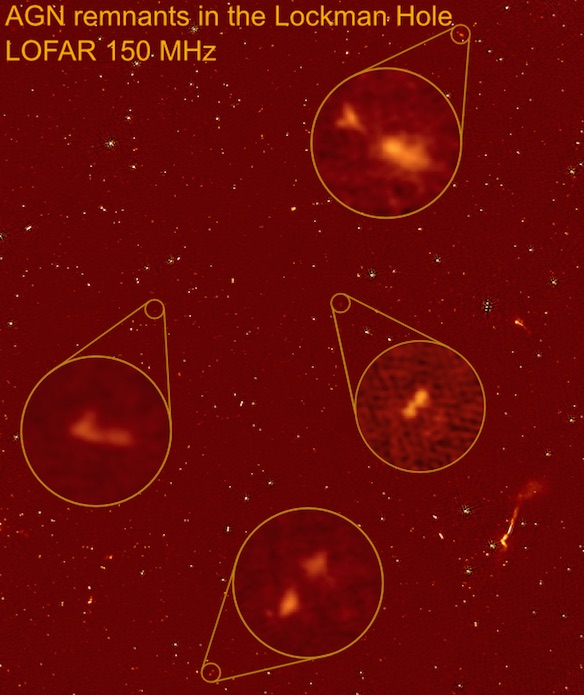Daily Image
19-09-2017Dying radio galaxies in the LOFAR sky
| Submitter: | Marisa Brienza, Raffaella Morganti & Leith Godfrey |
| Description: | Understanding the life-cycle of radio loud AGN has recently gained a new broader relevance as it can help quantifying their feedback on the surrounding medium and on the overall galaxy evolution. Radio observations allow us to trace the different stages of this life-cycle. After having being fuelled by the central black hole for few tens of millions of years, jets in radio galaxies switch off. The following period is often referred to as the "remnant phase", during which particles are not accelerated anymore and the radio lobes start to fade away. Due to their very diffuse radio emission and low luminosity at frequencies above 1.4 GHz, these remnant sources have remained elusive for many years. Thanks to its unprecedented sensitivity and resolution at low frequencies LOFAR has opened the way to the study of these sources. As part of the ERC project RadioLife, we have performed an extensive search for remnant radio galaxies in the Lockman Hole, a well-studied extragalactic field. To select them we have used criteria based on both the source radio spectrum and their morphology. In this way we have identified 24 candidates which cover a variety of characteristics and likely represent different stages of the source evolution. In addition to this, we have run Monte-Carlo simulations to obtain mock catalogues of radio galaxies and predict the fraction of remnants that should be found in radio flux limited samples, such as the Lockman Hole sample. Our results show that, although even at low frequency the fraction of remnants remains low, we can make a more complete inventory of these objects, hence trace their evolution, something not possible before. These results suggest that a rapid expansion of the plasma must occur in the final stage of the life of a radio source. Simulations support this scenario. Interestingly, we find that not all remnants have ultra-steep spectrum as previously believed! Have a look at the complete results in the paper, which is now accepted for publication in Astronomy & Astrophysics ( https://arxiv.org/abs/1708.01904 ) and stay tuned for the next findings from the LoTSS survey! |
| Copyright: | ASTRON |
| Tweet |  |
